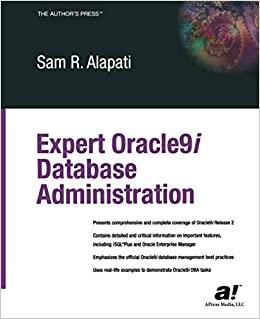Question
This assignment has two parts, and you need to answer 12 questions in a short-answer format, always making sure you use proper references/citations for your
This assignment has two parts, and you need to answer 12 questions in a short-answer format, always making sure you use proper references/citations for your answers. If you use the textbook for example, be sure to reference it. You are welcome to use any common citation format such as MLA, APA or in Computer Science we use IEEE or ACM formats; just be sure the reference is complete and correct in whatever format you choose. (You might find this site useful for citation formatting: https://www.citationmachine.net/ )
Part A: (10 pts)
The difference between the panning-for-gold and sponge models of learning is especially important. There is an unfortunate dependence on the sponge model. By contrasting the two models, we can learn that critical analysis is rewarding. Examples of public gullibility and erroneous conclusions by learned people are especially useful. Keep in mind that EXPERTS DIFFER; thus, depending on the last expert whom one has encountered is a highly hazardous strategy for developing personal beliefs. This is not to say that expert opinions hold no merit, of course. There are many moments in our lives where we simply must rely on experts because we lack a certain base of knowledge; it is generally a better idea for a layman to allow a surgeon to remove an inflamed appendix than attempting to remove it themselves. Thus, we do not want to foster an attitude of cynicism toward experts, but one of skepticism.
You need to answer the following 4 questions in a short-answer format:
Briefly describe what is meant by the "panning-for-gold" model of learning. [2 pts]
Briefly describe what is meant by the "sponge" model for learning. [2 pts]
Highlight the difference between the panning-for gold and sponge models of learning using a simple (but realistic) example. [2 pts]
Let's revisit the article where reputable Quebec researchers "claimed" they have found an effective drug to fight COVID-19. Explain briefly how, in your opinion, the sponge model could be damaging in this case and, in the spirit of understanding the positive behind the finding while at the same time acknowledging its limitations, how would you explain this finding (ie. what do you think is the point of view of the researchers; be as tactful as you can, given the scientific article they published was peer-reviewed in a reputable venue). [2+2 pts]. The article link for #4 is: Quebec researchers say they have found the first effective tablet drug to fight the coronavirus | CTV News
Part B: (10 pt)
Provide a concise answer for each of the following discussion questions:
a. Explain the differences between descriptive and prescriptive issues and conclusions. (1pt)
b. What clues can you use to help you find the issue and conclusion? (1pt)
c. Some conclusions are implied by a communicator rather than made explicit. What clues might help you recognize an implied conclusion? Can you think of situations in which communicators are likely to prefer implied conclusions? (2pt)
d. How do conclusions differ from opinions? (1pt)
e. How does the term argument in the textbook (see slides as well) differ from having an argument with an acquaintance? (1pt)
g
f. Can facts be reasons? How so? (1pt)
g. Explain the difference between a REASON and REASONING. (1pt)
h. The authors in the textbook stress the desirability of being open to fresh reasons. What are some steps that you can take to achieve such openness on a topic for which you already have a strong opinion? (2pts)
Step by Step Solution
There are 3 Steps involved in it
Step: 1

Get Instant Access to Expert-Tailored Solutions
See step-by-step solutions with expert insights and AI powered tools for academic success
Step: 2

Step: 3

Ace Your Homework with AI
Get the answers you need in no time with our AI-driven, step-by-step assistance
Get Started


